Wolf Lifespan: How Long Do Wolves Live? (original) (raw)
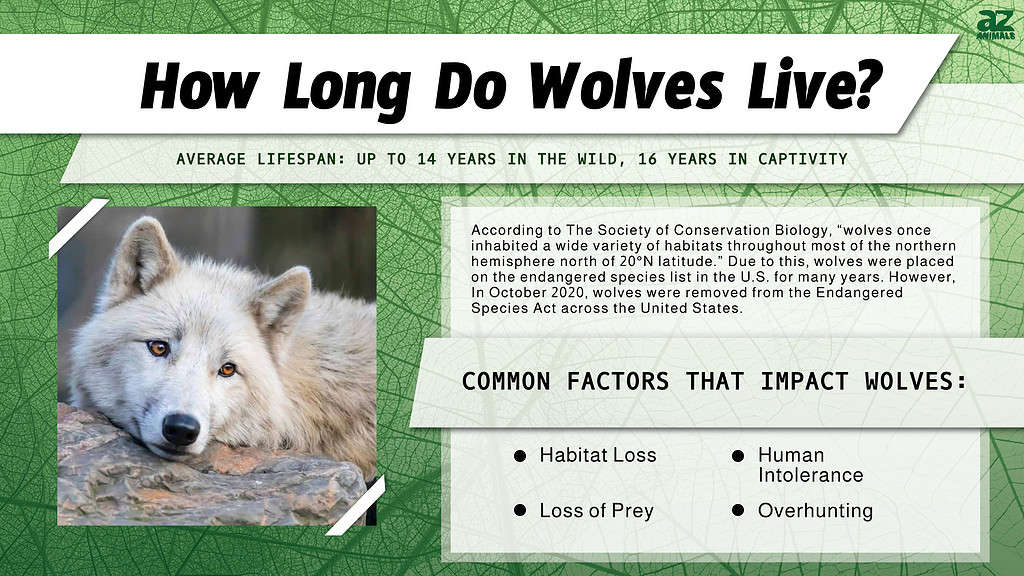
Wolves are one of the most popular wild animals and for good reason! As ancestors of today’s modern dog, these apex predators are one of the most notable in the entire animal kingdom. Many cultures have often associated wolves with the symbols of freedom, courage, loyalty, and sharp instincts. This explains why out of so many wild animals, wolves were chosen to be domesticated into man’s best friend.
As such a fascinating species, there’s still so much mystery behind the wolf. Have you ever wondered how long these fierce hunters live and what could take down an apex predator? If you’ve ever wondered how long wolves live, then let’s explore the wolf lifespan and how long wolves live in the wild and in captivity.
A Quick Background On Wolves
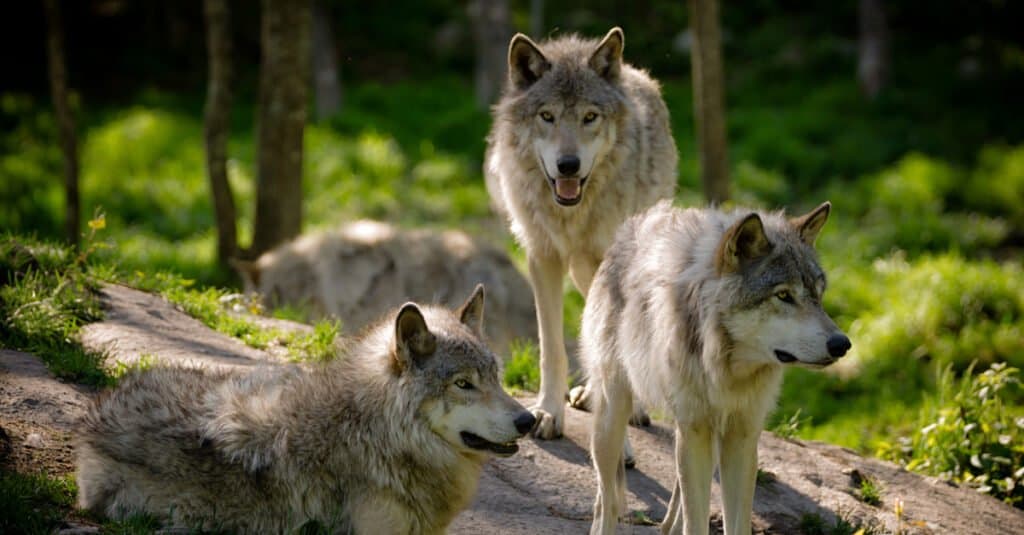
A pack of wolves can range from 2 to over 30 wolves. On average they run in packs between 5 and 8 wolves.
©iStock.com/GatorDawg
Wolves are the largest members of the dog family, also known as Canid. Interestingly enough, all of your favorite dog breeds are descendants of wolves! There are currently three different species of wolf, however, there are about 40 different subspecies of wolf.
Thanks to their sharp teeth and strength, wolves have managed to stay at the top of the food chain. They are classified as an apex predator and because they hunt in packs they are able to take down some pretty big animals. It’s not uncommon to see a pack of wolves take down elk, moose, bison, and deer.
As the top predator in their environments, there aren’t many other animals that act as a threat to them.
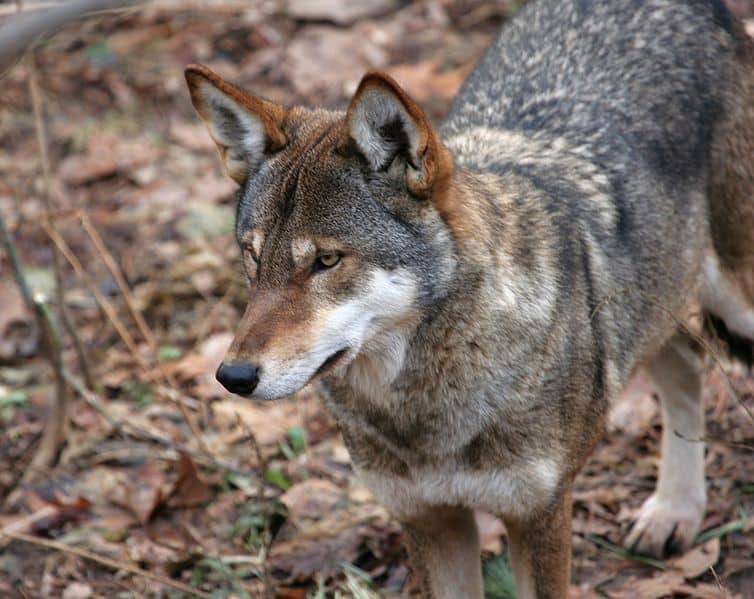
Wolves can run at 36 to 38 mph.
©Davepape, Public domain, via Wikimedia Commons – Original / License
Wolves can live up to 14 years in the wild, while those in captivity can live up to 16 years.
When taking into account specific species, the average lifespan of a gray wolf is about 6 to 8 years in the wild. Gray wolves are the most recognizable and largest wolves, as they sport long bushy tails with a black tip and can weigh up to 143 pounds. They are native to both Eurasia and North America.
To this day, the world’s oldest wolf was a 19-year-old female wolf named Madadh. Madadh was rescued from a wildlife park when she was only 10 days old.
Let’s explore what impacts the wolf’s lifespan and what their major threats to survival are.
Main Threats to the Survival of Wolves
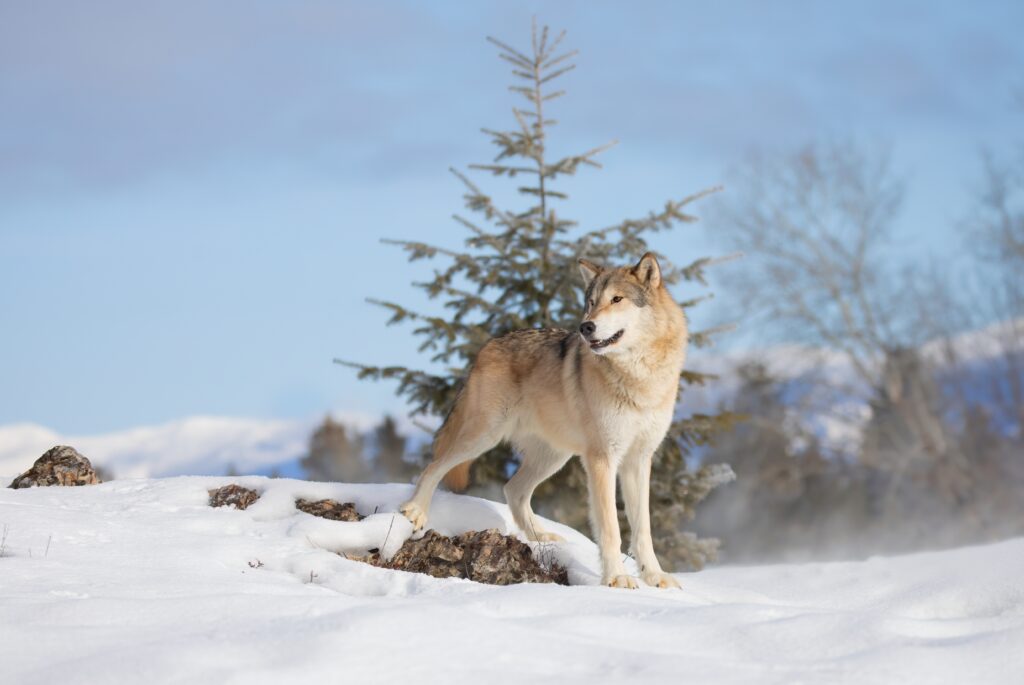
A wolf can eat 20 pounds of meat in one meal.
©Jim Cumming/Shutterstock.com
As wild animals, wolves have learned to survive in pretty harsh habitats. However, despite their status as a top predator, there are still many threats that impact their survival. According to The Society of Conservation Biology, “wolves once inhabited a wide variety of habitats throughout most of the northern hemisphere north of 20°N latitude.” Due to this, wolves were placed on the endangered species list in the U.S. for many years. However, In October 2020, wolves were removed from the Endangered Species Act across the United States.
Still, there are a few main threats to wolves that include:
- Habitat Loss: Human encroachment on wolves and other animal habitats is a serious threat. This causes loss of habitat. With a loss of habitat, wolves will find themselves in areas with more people, such as highways and railways.
- Human Intolerance: Throughout human history, there have been many misconceptions about wolves. Many myths and fairytales have portrayed them as dangerous animals and hunters often view them as competition for game. Thus, humans have hunted and killed wolves for many years.
- Loss of Prey Base: Wolves require a sufficient amount of natural prey to survive. Reduced availability of prey because of overhunting by humans and habitat loss impacts their ability to hunt and feed themselves.
The Average Wolf Life Cycle
If you’ve ever met or taken care of a puppy dog, then you’ll have a rough idea of the wolf life cycle. Let’s take a look at how this amazing hunter goes from pup to grown adult.
Gestation
A wolf’s life cycle stage begins in its mother’s womb. Mother wolves are pregnant for 60 to 63 days. During this period, the body of the wolf begins to develop. This includes the eyes, nose, head, limbs, legs, and more.
Wolf Pup
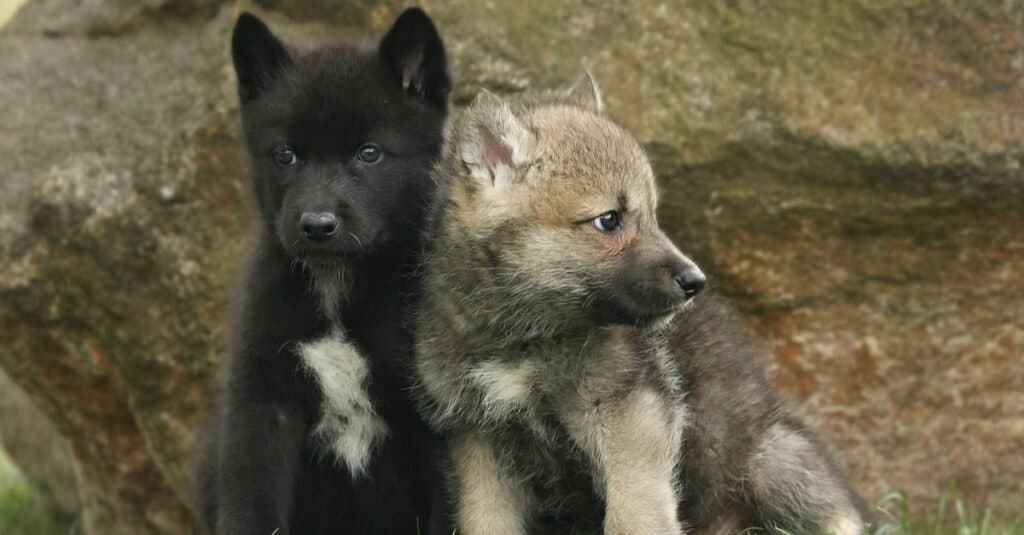
Wolf pups are born blind with bright blue eyes.
©Jan Hejda/Shutterstock.com
Wolves will give birth in mid to late spring. The average litter size will be anywhere between 5-11 pups. However, there have been litters where only one has been born. Puppies are born blind and have their ears closed. They rely on their mothers for milk for nourishment.
Juveniles
When they reach the age of six months, the pups are referred to as juveniles. During this in-between stage, they are no longer considered puppies but are also not fully grown wolves yet. At this stage, the juveniles are able to step away from the den where they grew up and go out hunting with the pack. They’re not yet old enough to participate in the hunting, but instead will stand nearby and observe.
Adult Wolves
At 2 or 3 years, a wolf is finally fully mature. At this point, they are faced with a serious decision. They must choose between life in their pack or life on their own. If they choose to leave, the wolf will then have to form their own pack.
Fun Facts About The Wolf Lifespan & Life Cycle
Interested in learning more about the wolf lifespan? Check out these fun facts about their life cycle:
- Only the pack’s highest-ranked “alpha” male and female reproduce once a year. This means that all other wolves in the pack do not mate. Instead, the other pack members will help raise the pups, treating them like siblings.
- Wolves are always cooperating with one another in their pack as this ensures their survival. They use howls to communicate with one another as well as scent.
- Wolves are monogamous. This means they have the same partner for life.
Share this post on:
Volia Schubiger
Volia Schubiger is a freelance copywriter and content editor with a passion and expertise in content creation, branding, and marketing. She has a background in Broadcast Journalism & Political Science from CUNY Brooklyn College. When she's not writing she loves traveling, perusing used book stores, and hanging out with her other half.
Thank you for reading! Have some feedback for us?
Thank you for your feedback!
We appreciate your help in improving our content.
Our editorial team will review your suggestions and make any necessary updates.
There was an error submitting your feedback. Please try again.